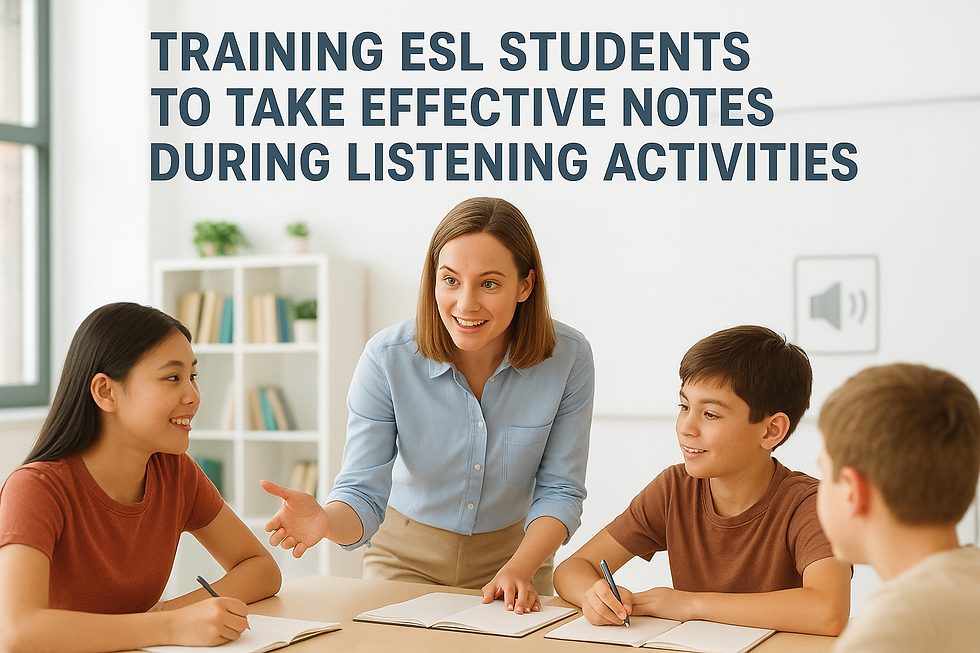How to Teach ESL Students to Ask Better Questions in Class
- Mike Kim
- Jul 29
- 1 min read

🎯 Introduction
In many ESL classrooms, students wait for the teacher to ask everything. But building the confidence to ask their own questions is a powerful step toward language fluency and autonomy. Here’s how TEFL teachers can turn quiet classrooms into curiosity-driven spaces.
🧠 Why Students Don’t Ask Questions
Fear of making grammar mistakes
Cultural norms around authority
Not knowing how to form questionsUnderstanding these barriers helps you create safer spaces for student inquiry.
🛠️ Strategies to Teach Question Formation
Start small:
Use WH-question templates (Who, What, Where…)
Match question words with answers in a game
Turn statements into questions (e.g., “He is happy” → “Is he happy?”)
Daily drills help students get the hang of it.
🤝 Practice Through Pair Work
Give students a topic (e.g., favorite food, weekend plans) and have them prepare 2–3 questions for their partner. Swap roles, then share findings with the class. This encourages thinking, speaking, and listening at once.
🎲 Turn Questions Into a Game
Try:
Question Jenga (each block has a prompt like “Ask someone why they…”),
Hot Potato Q&A, or
Find Someone Who... using student-made questions.Gamifying curiosity makes it fun and low-pressure.
💬 Pro Tip
Celebrate all attempts at asking — even with grammar mistakes. Correction can wait; confidence-building comes first.
🧭 Final Thoughts
Teaching ESL students to ask better questions isn’t just about grammar — it’s about empowerment. When students learn to be curious in English, they take charge of their own language journey.
📌 Want to Teach with a Focus on Curiosity?
GoTEFL gives you strategies to promote student-driven learning, while TEIK helps you find placements where communication is encouraged, not just corrected.




Comments